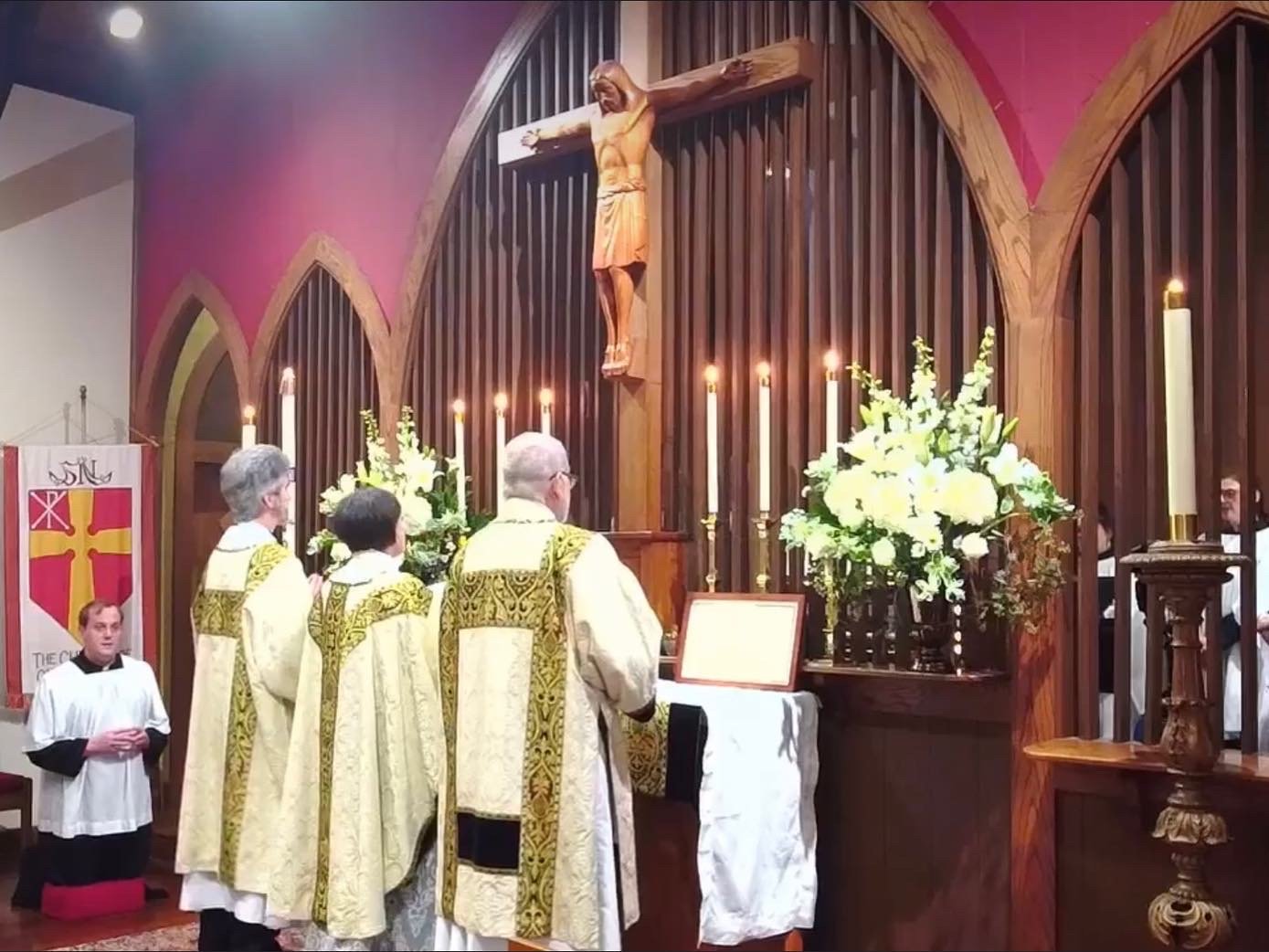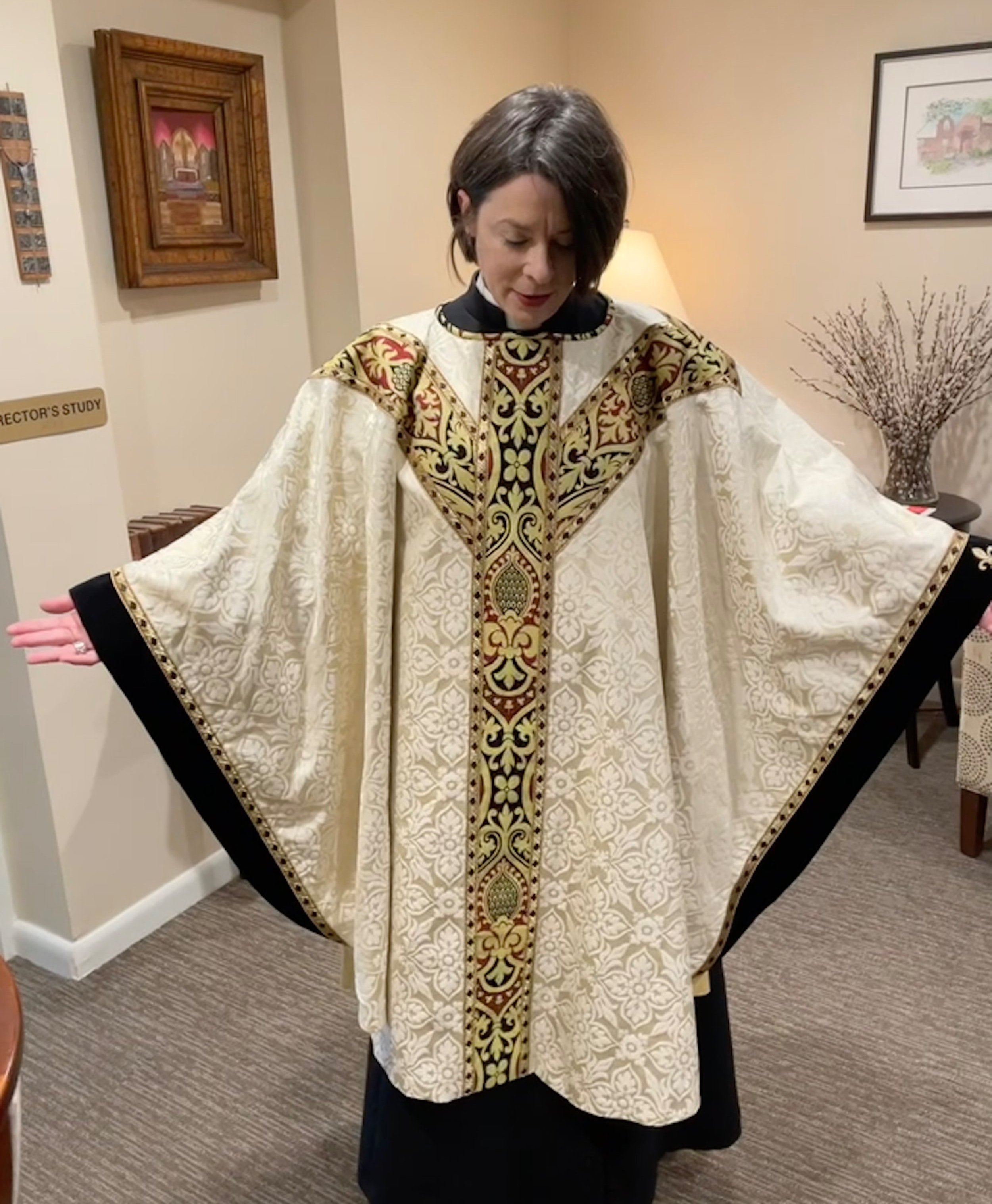
Banner
The Church of our Saviour’s banner is woven of silk yarn with two types of weave structures combined in a triple weave, meaning there are three layers: red, gold, and white. The border features a summer/winter Celtic style of weaving. At the top, there's something that almost looks like a symbol, but in actuality, it's two letters in elaborate font. The two letters, "SN" stand for the first letters of "Our Saviour" in Latin, "Salvator Noster." This design is copied from our church seal, which you may find above the door to the narthex. The banner was commissioned in 2007 by Fr. John Bolton and hand-woven by a former parishioner, Janet Rodie, pictured.
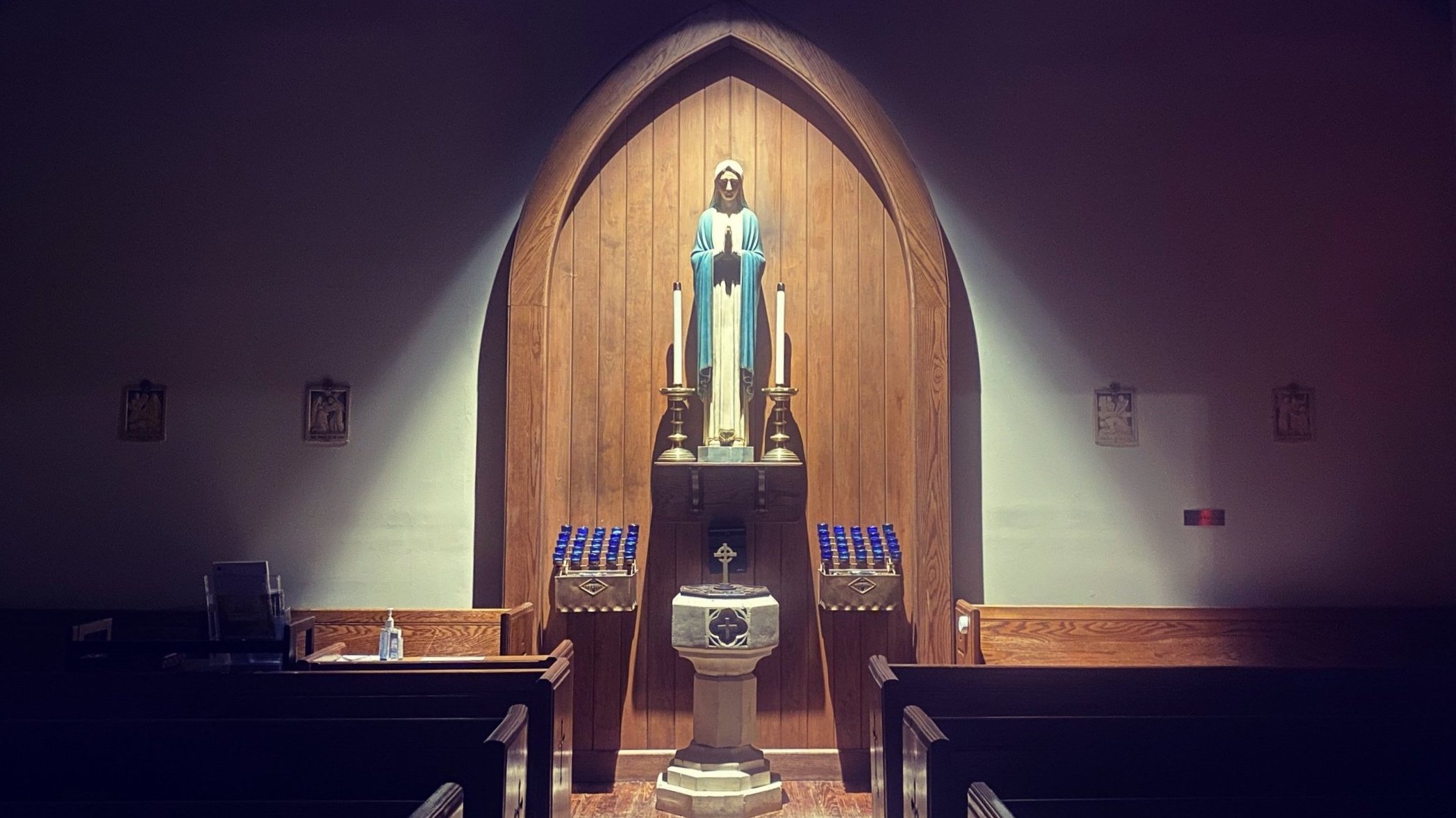
Baptismal Font
The beautiful baptismal font at the Church of Our Saviour was given to us by the Episcopal Church of St. Peter in Rome, Georgia. St. Peter’s had received the Caen stone baptismal font in the late 1800s from the rector and congregation of Trinity Church in Pottsville, Pennsylvania and in honour of Mrs. John Noble and her daughter, Miss Kate Noble. In 1900, St. Peter’s received a new font, and this one was generously given to the Church of Our Saviour when it was founded.
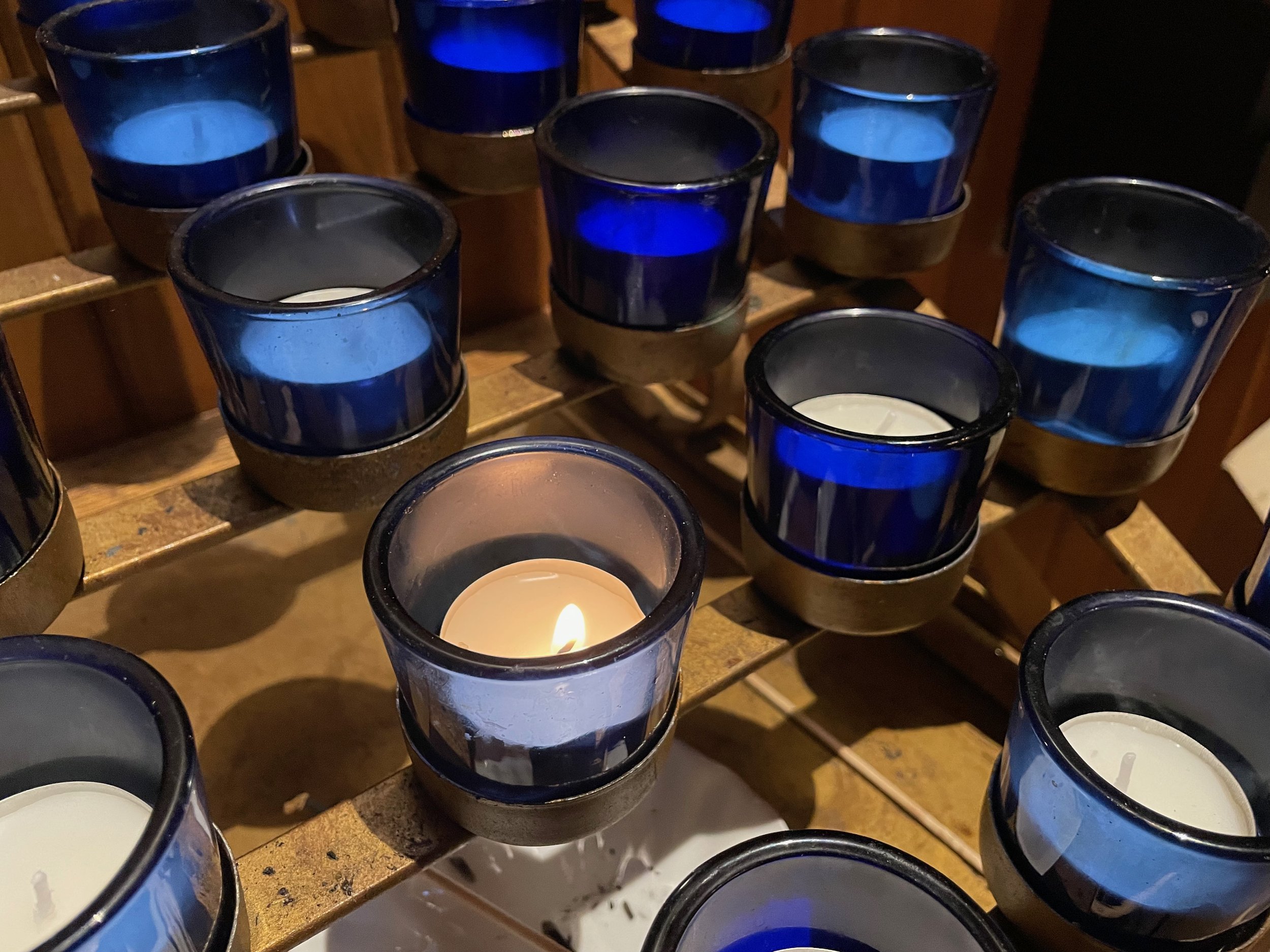
Brass Cross
Located on the floor of Pettway Parish Hall, this brass cross marks the spot where the Blessed Sacrament was reserved in this diocese for the first time.
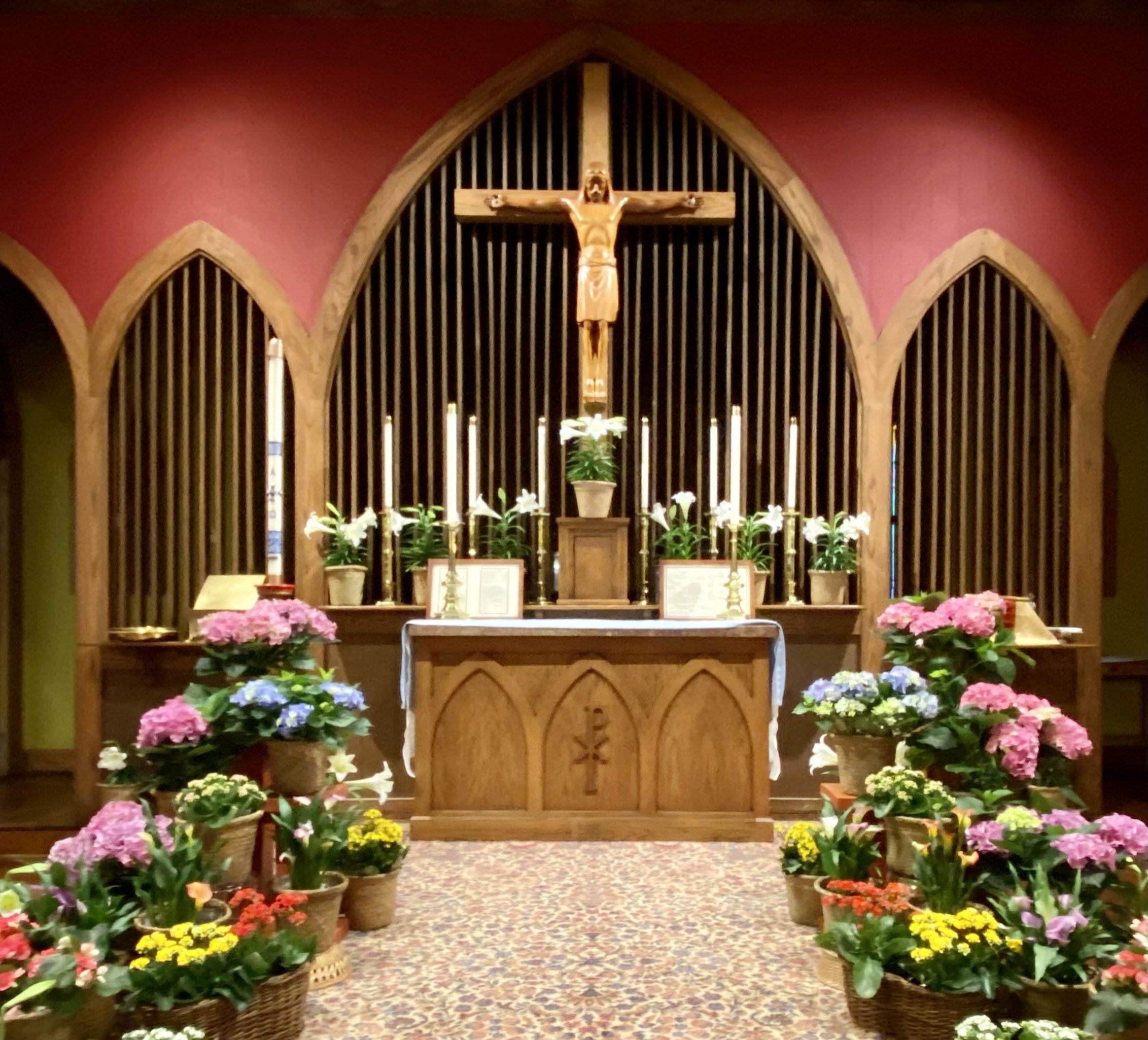
Crucifix
The Church of Our Saviour has a beautiful, unique, hand-carved crucifix, created by one of our own parishioners. It was created by Kendall P. Dane. It took total of 18 months to carve, and it was finished by February 1964. The cross itself is Spanish Cedar, and the Corpus (body of Jesus) is solid African Mahogany.

Crucifix in the Lady Chapel
1952, the Lady Chapel was built with two classrooms upstairs. The crucifix in the chapel was made by Benedictine Monks. It was given by Walter Foster. No other information about the crucifix is known.

Icons of The Resurrection
and the Theotokos
Parishioner Julian Haynes donated these two icons, which he acquired in Greece. Julian served as the John Hilton Knowles Provost at the Massachusetts General Hospital. Julian, as part of these duties, served on the Board of Anatolia College, located in a suburb of Thessalonika, Greece.
This necessitated frequent trips to Greece. During this time, his status enabled him to obtain a "Diamonitrion," which allowed him to visit Mount Athos, the Holy Mountain and to stay at the monasteries. These visits affected him deeply. Over the year or two following his visit to Mt. Athos, Julian found shops in every city selling reproductions and purchased several, including this Theotokos and the Resurrection, which you can now find in the Lady Chapel and in the hallway right outside the sacristy.
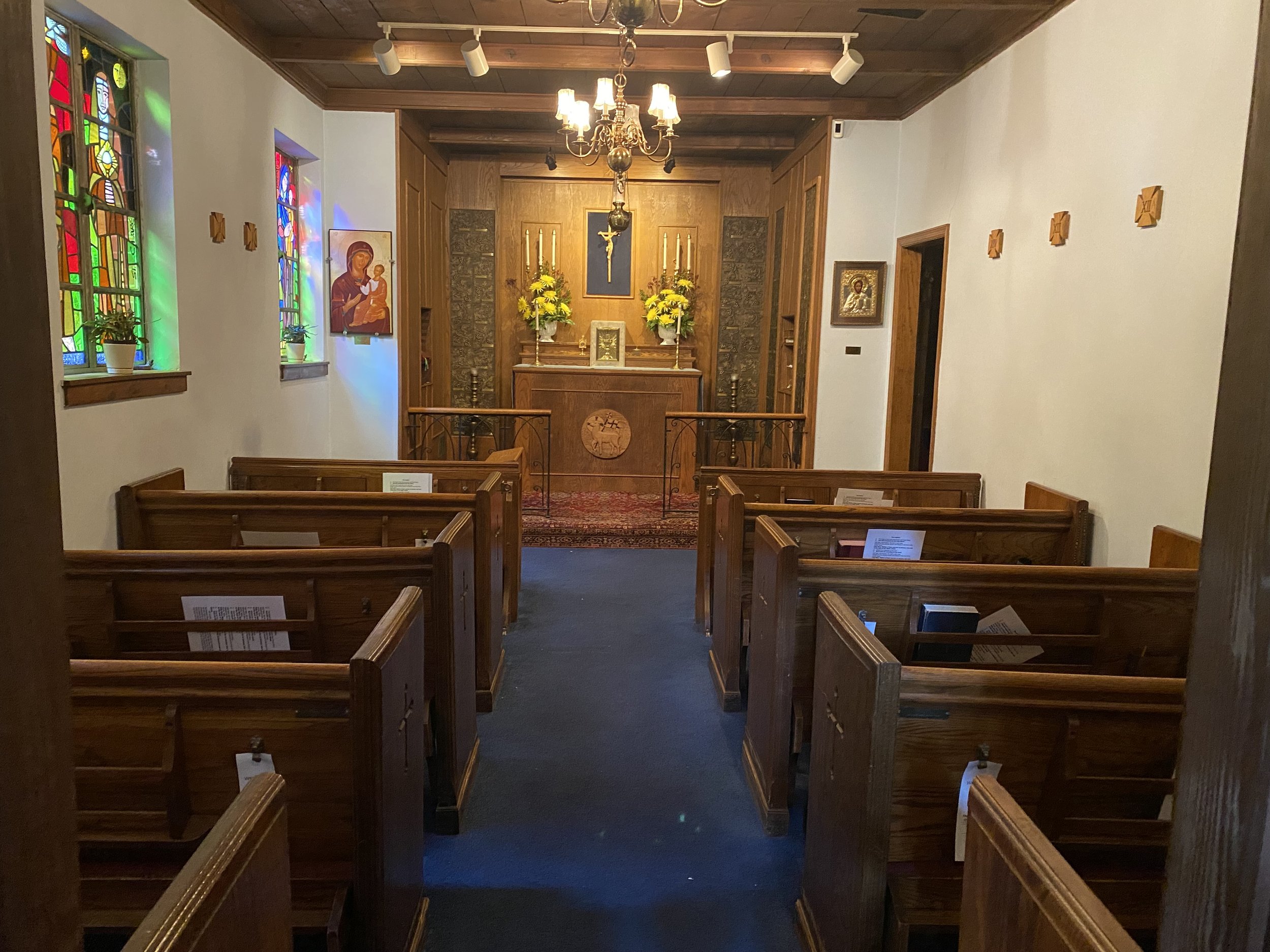
Our Lady of Walsingham Window
This window was installed in the door leading from Pettway Parish hall into the Lady Chapel after one of a number of break-ins destroyed the previous window sometime around the year 2000. Fr. Warren Tanghe purchased this piece at a shop in Walsingham, England and then had it set into the panels which surround it and placed it in the window of the chapel’s interior door.
Amongst Anglo-Catholics, this title for Our Lady is very popular. Walsingham, England is a destination for pilgrimage for anyone with devotion to Our Lady. In a vision in 1061, Our Lady showed a vision to Richeldis de Faverches at her home in Walsingham. She showed her the house in Nazareth where the angel Gabriel appeared to Our Lady, telling her of the upcoming birth of Jesus. She then asked Richeldis to build a duplicate of it there in Walsingham. Richeldis did, and the site grew into a major site for pilgrimage with a priory and other buildings. Destroyed during the Reformation, it was rebuilt in the 20th Century. Now the site is visited by around 350,000 people a year.
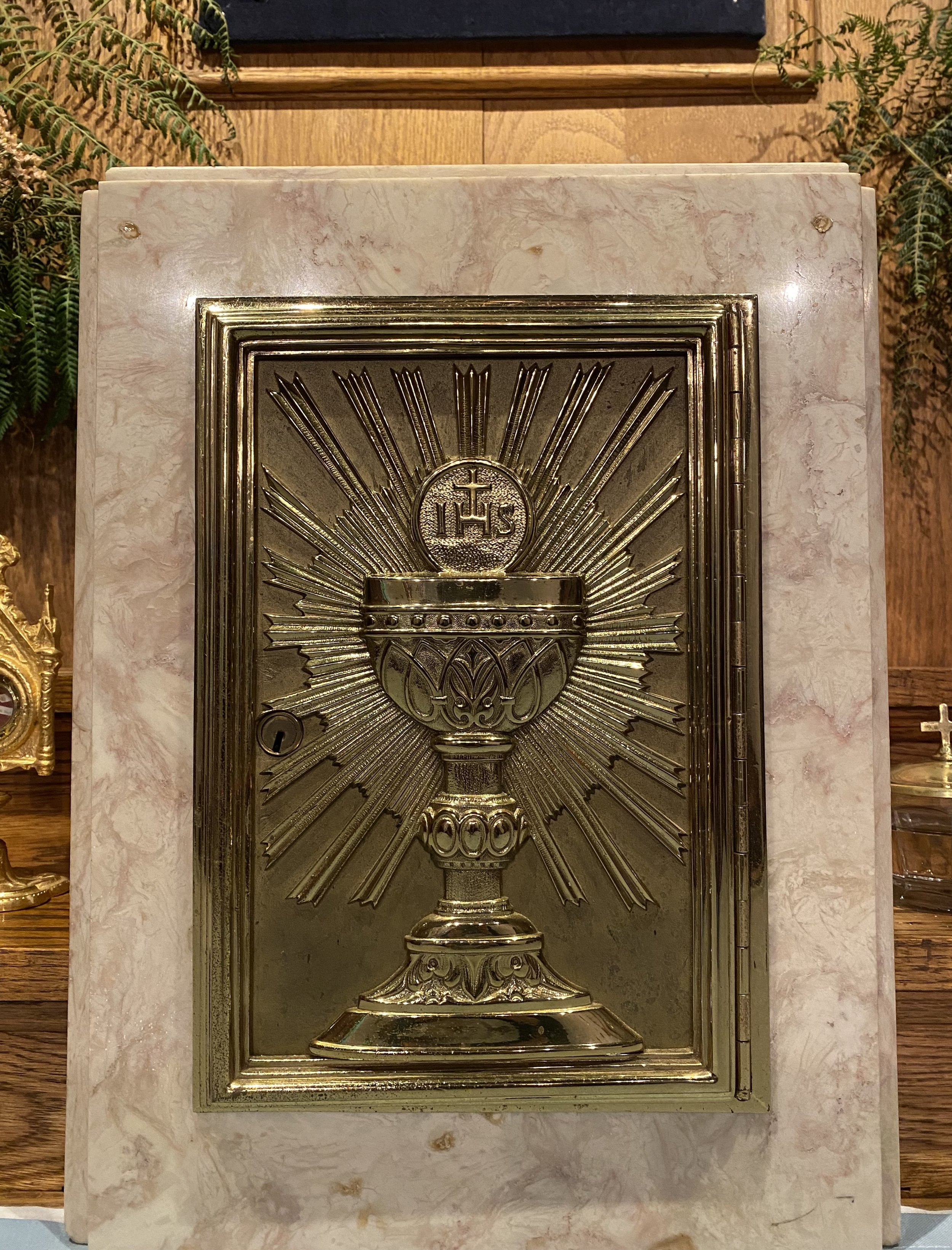
Our Lady Statue
This beloved statue of Our Lady was donated by a parishioner, Mary Sommers, in honour of her parents.
Monies that were donated to the parish after Regina Goldmann (mother of Mary Sommers), who passed in November 2009 were requested to be used for parish improvements or to replace items that were in need of replacing, as Mary's parents were strong believers in making sure the parish was kept up and in good repair.
The Mary statue that had been in the chapel had been broken previously and the chapel was in need of a new one. Regina and Edward Goldmann, parents of Mary Sommers, were parishioners who regularly attended mid-week services and their ashes are in the chapel's columbarium. So the decision was made to use some of the donated funds to purchase a new Mary statue for the chapel (installed around 2010 and selected by Fr. John Bolton) and some of the funds to purchase a new thurible for Leonard. The wood on the base of the statue was created by Mary's brother, Bob Goldmann.

Pentecost Set
This hand-crafted set (all by parishioners) is one that we still use here at Church of Our Saviour. Designed by artist Linda Cornelius, each symbol on the set was lovingly embroidered by Helen Abel, Mary Brown, Mary Ann Cash, Sue Crown, Catherine Dales, Priscilla Davis, Luz Hunter, Martha Pettway, Jane Shearin, Ruthann Strobel and Karen Travis. Lillian McDonald constructed the embroidered cloth into the finished product. This high mass set was begun sometime in early 1977 and completed in 1978. It was worn for the first time (uncompleted) at the Solemn High Mass celebrating the 53rd Anniversary of the parish. The set has been carefully preserved and is still in use today.
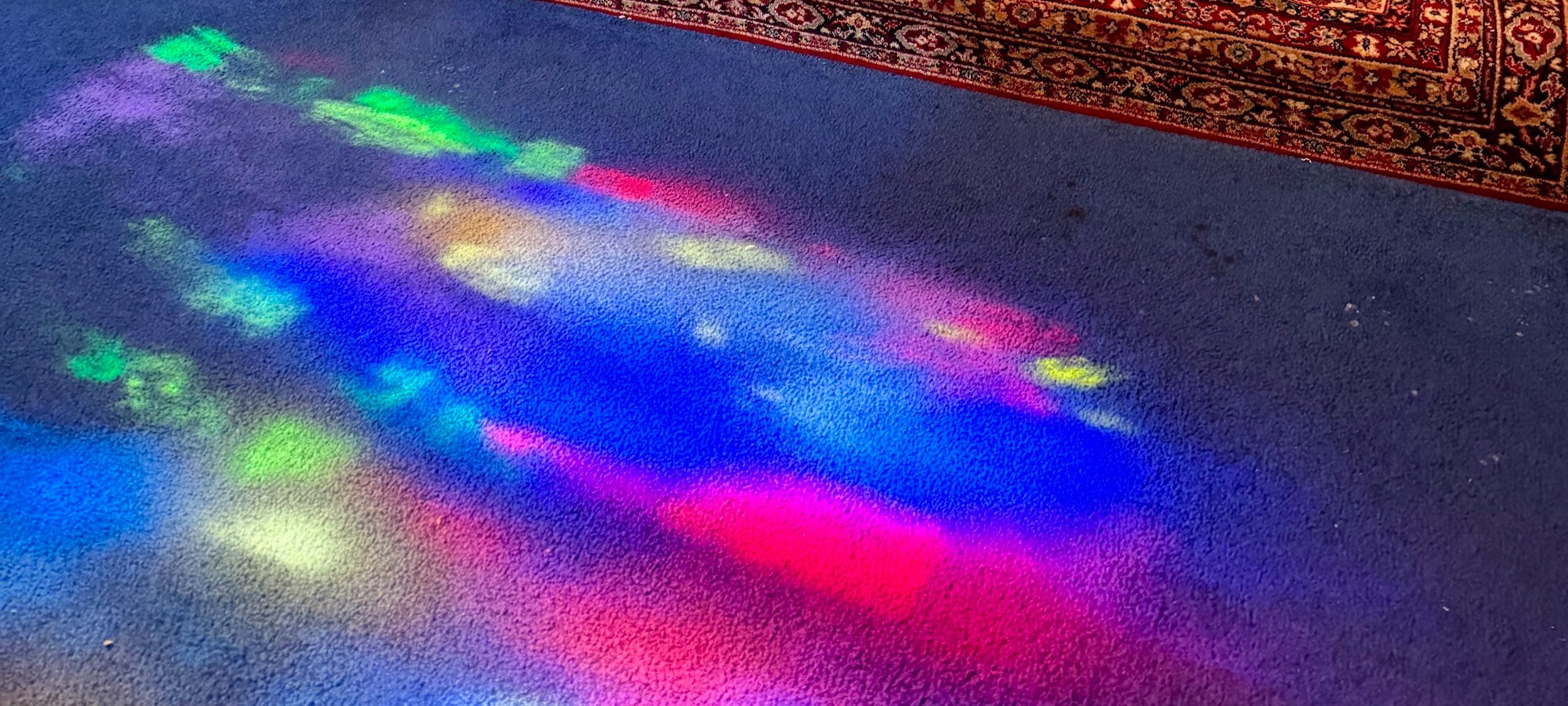
Relic of St. John the Baptist
The donor of this relic to the parish remains unknown. The wax seal on the back is intact, which indicates legitimacy.
Currently this relic rests on the retable of the altar in the Lady Chapel.













